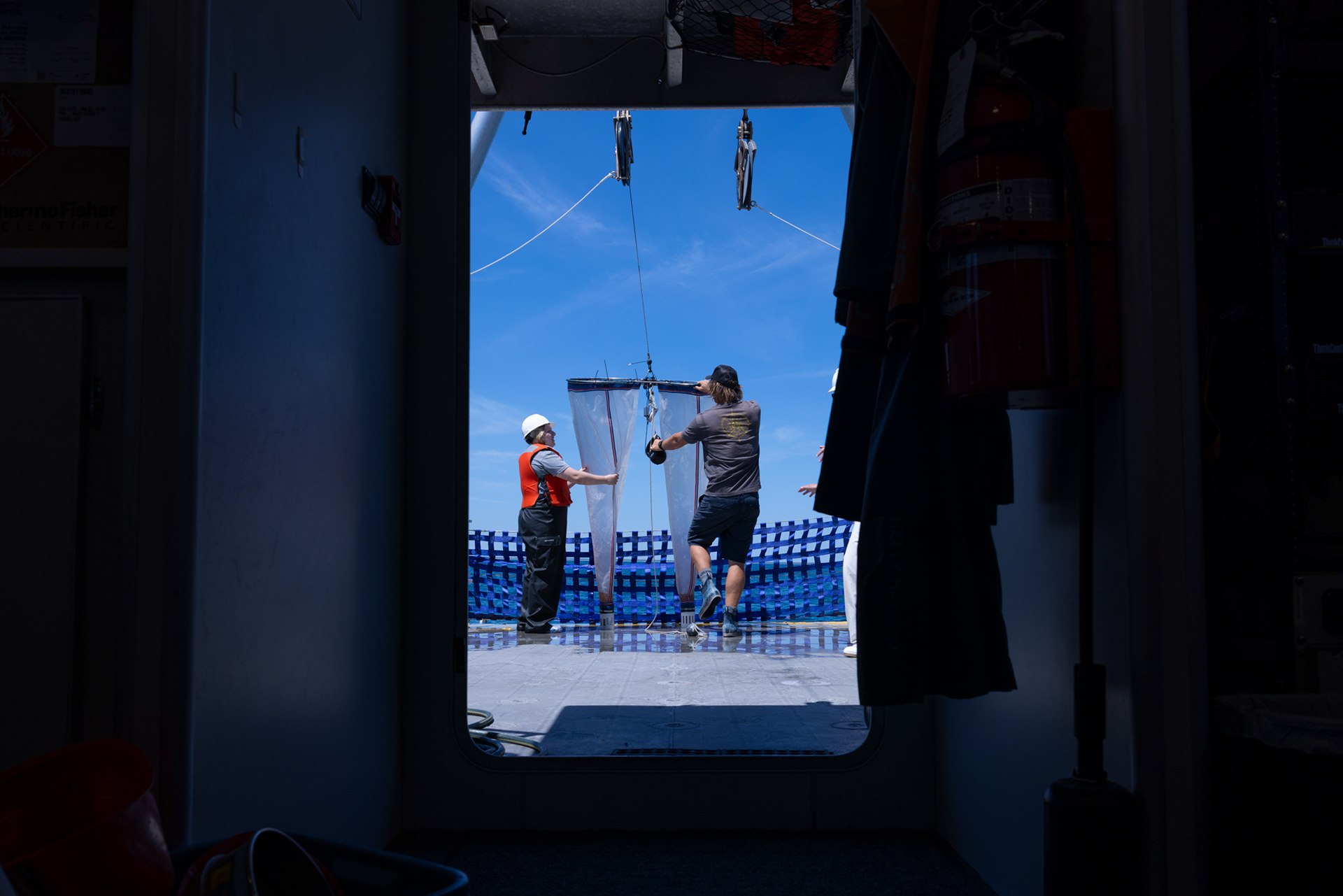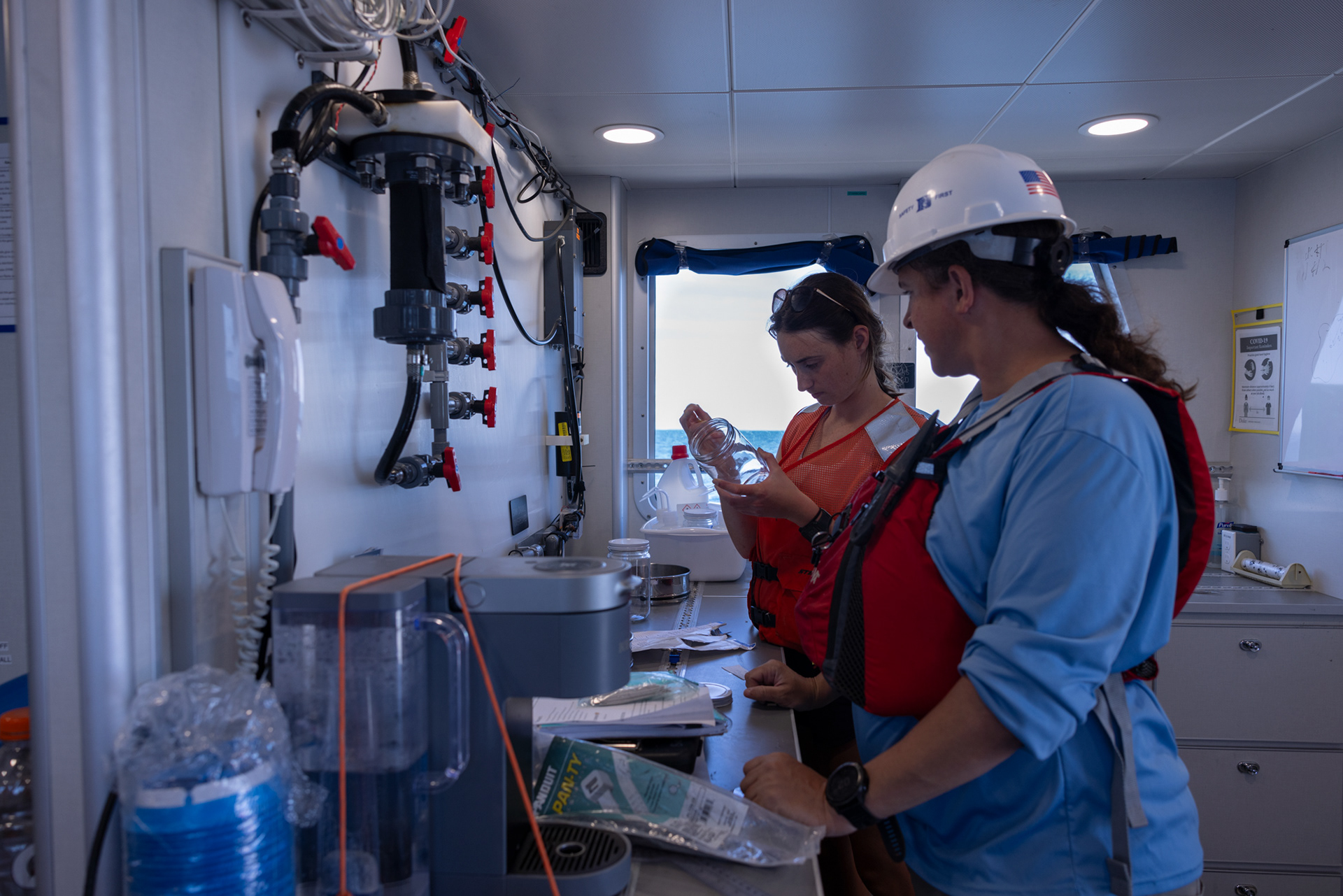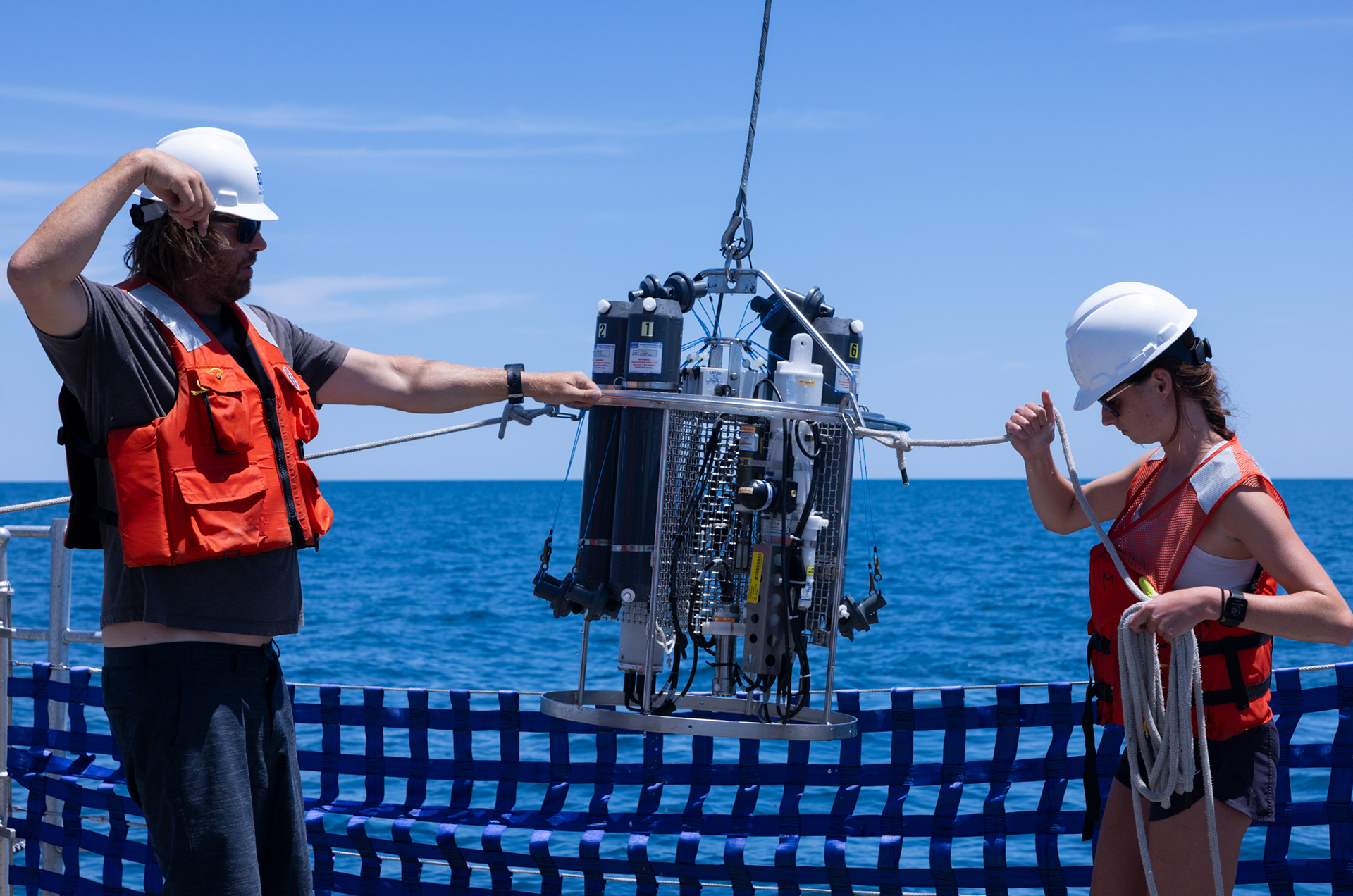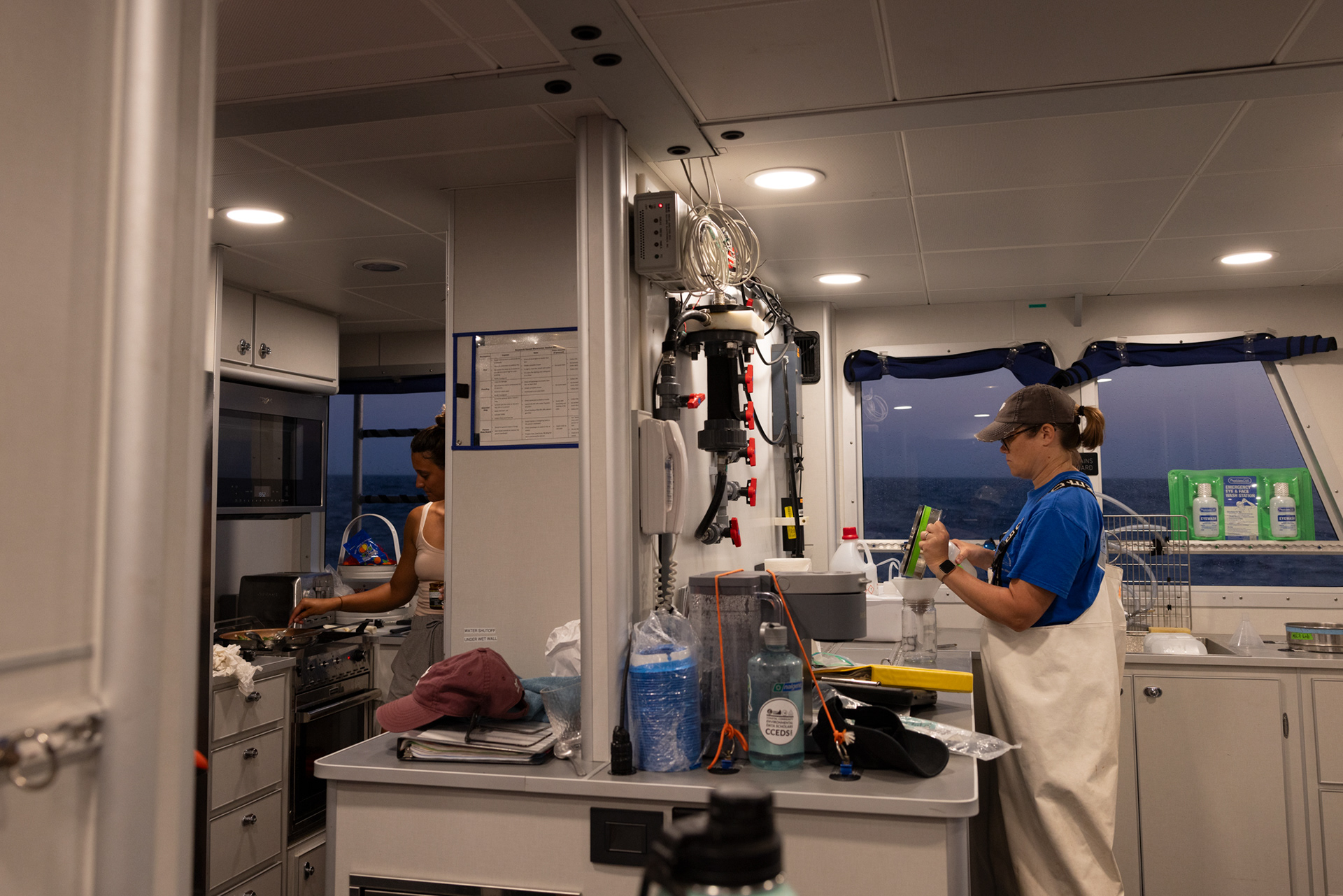In June of 2024, I had the opportunity to be part of a two-day research cruise to collect ichthyoplankton, fish eggs and larvae, from the Atlantic Ocean. I took the opportunity to document what it looks like to be part of an oceanography expedition.

The science team aboard the R/V Shearwater deploys a Bongo net during an ichthyoplankton sampling cruise off the coast of Cape Hatteras, N.C., on Saturday June 8, 2024. The team hopes to collect preliminary data to determine which species spawn near the convergence zone of warm and cold currents near Cape Hatteras.

In the wet lab, Janie Sanborn and Terry Papavasilis label jars in preparation for sample collection. The jars will store samples in Ethanol until they can be transported back to shore.

Jordan Strickland holds one of the marine organisms collected during trawling.

Rebecca Asch, Ph.D., and Jordan Strickland examine icthyoplankton samples.

Researchers use rope to secure the CTD instrument after deployment. CTDs measure the conductivity and temperature of the water column at various depths.

Janet Nye, Ph.D., prepares samples for storage while a crew member cooks dinner. The larval fish samples will be analyzed using DNA-barcoding to identify species and estimate abundance.
